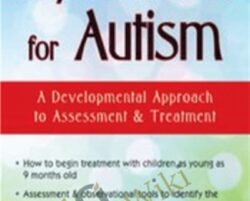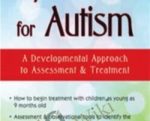Early detection is critical to effective autism treatment… every moment counts.But, at what age can you effectively identify autism and begin treatment? Do you know how to start treatment with very young children? Autism expert, Griffin Doyle, PhD, will show you the answers to these questions and more!Looking through a developmental lens, you will learn new and improved strategies allowing you to effectively close the gap between what you know about autism and how to begin early treatment!Through case examples, videos and lively class discussion you’ll be guided on how you can identify key markers of autism and begin treatment with children as young as 9 months old. You’ll get specific instruction so you can effectively intervene, prevent regression and promote developmental gains in young children – even prior to formal diagnosis.In this recording, you’ll learn the necessary skills you need to:Ask “What is missing?” – Subtle differences in neurotypical and ASD-like childrenIdentify the easy-to-miss ‘red flags’ of ASD in infants, toddlers and young childrenDevelop an initial working profile of sensory-motor processing deficienciesCustomize treatment plans for each child’s unique challengesPositively impact clinical outcomes with evidence-based therapeutic strategies to reduce and replace maladaptive behaviors.Don’t let a wait and see approach cost kids a better future. Intervene early when brain plasticity is much more pronounced and the impact of intervention is much more comprehensive!You’ll get the early identification and intervention skills you need to make a life-changing impact on children with autism!Summarize the core functional emotional developmental capacities as they relate to assessment and treatment of autism in clients.Assess for “red flags” and subtle signs of “autistic-like” behaviors seen in young children who are at risk for autism.Use formal/developmental assessment protocols to determine if autism is present.Implement clinical techniques to reduce problematic behaviors inherent to young children with autism.Use affect-based strategies to improve client engagement and reciprocity in clinical treatment.Design an intervention treatment plan customized to meet the developmental needs of each individual child.The Developmental PerspectiveCore functional emotional capacities: Case examplesInherited neurobiology and human experienceInfant/Child seeking security, information, meaningRole of the parent-child bondAll developmental domains are interdependentWhat typical traits are missing in ASD-like behavior?Assessment and Easy-To-Miss “Red Flags”Earliest atypical infant behaviorDSM-5® criteriaFormal evaluationsYour play/activity with childInformal and qualitative traitsParent-Child (P-C) InteractionDifferentiating SID or Expressive-Receptive LD from ASDCurrent research findingsDevelopmental EvaluationRate six core functional stagesRegulation and shared attentionWarm engagementIntention and purposeful, reciprocal interactionContinuous interaction and problem-solvingSymbolic play and languageRepresentational thinkingLevel of communication and play/activityQuality of P-C emotional bondJoint Attention (JA) and ImitationAtypical Sensory-Motor SystemsPatterns and triggers for ASD-like behaviorINTERVENTION STRATEGIES AND TECHNIQUESEncourage Shared Play and PleasureEstablish and hold mutual engagementTrack child’s interests at his/her functional levelFollow child’s back-and-forth paceFind Fun!! Go for the “Gleam” and eye contactGently join self-absorbing actionInvite/model further explorationInject needed “affect”Reciprocity/communicationIntentionalityRigidity/transitionsTreat Difficult BehaviorsDysregulation, security seekingMeltdownsSeeking/avoidingStimming/self-absorbedPerseverationPhysical proximity/holdingEating/sleeping problemsMajor Treatment ApproachesRelationship-based, ABA, mixed programsApplication of Developmental (DIR) ModelDyadic treatment approachDevelopmental Treatment FrameworkCreate a treatment plan in class: Class exampleFollow developmental evaluationPrepare suitable sensory-motor environmentShoot for child succeeding at his developmental levelFollow and join child’s interestsEmpower Parents and FamiliesHelp them come to terms with the ASD diagnosisStrategies for grief, stress, anxiety and depressionStrengthen/coach the parent-child relationship: Case exampleUnderstand their child’s behavior and motivesTeam work/referral processCoordination with school placementTag: “Early Intervention for Autism: A Developmental Approach to Assessment & Treatment – Griffin Doyle” Review. “Early Intervention for Autism: A Developmental Approach to Assessment & Treatment – Griffin Doyle” download. “Early Intervention for Autism: A Developmental Approach to Assessment & Treatment – Griffin Doyle” discount.
Early Intervention for Autism: A Developmental Approach to Assessment & Treatment – Griffin Doyle
₹12,616.00






